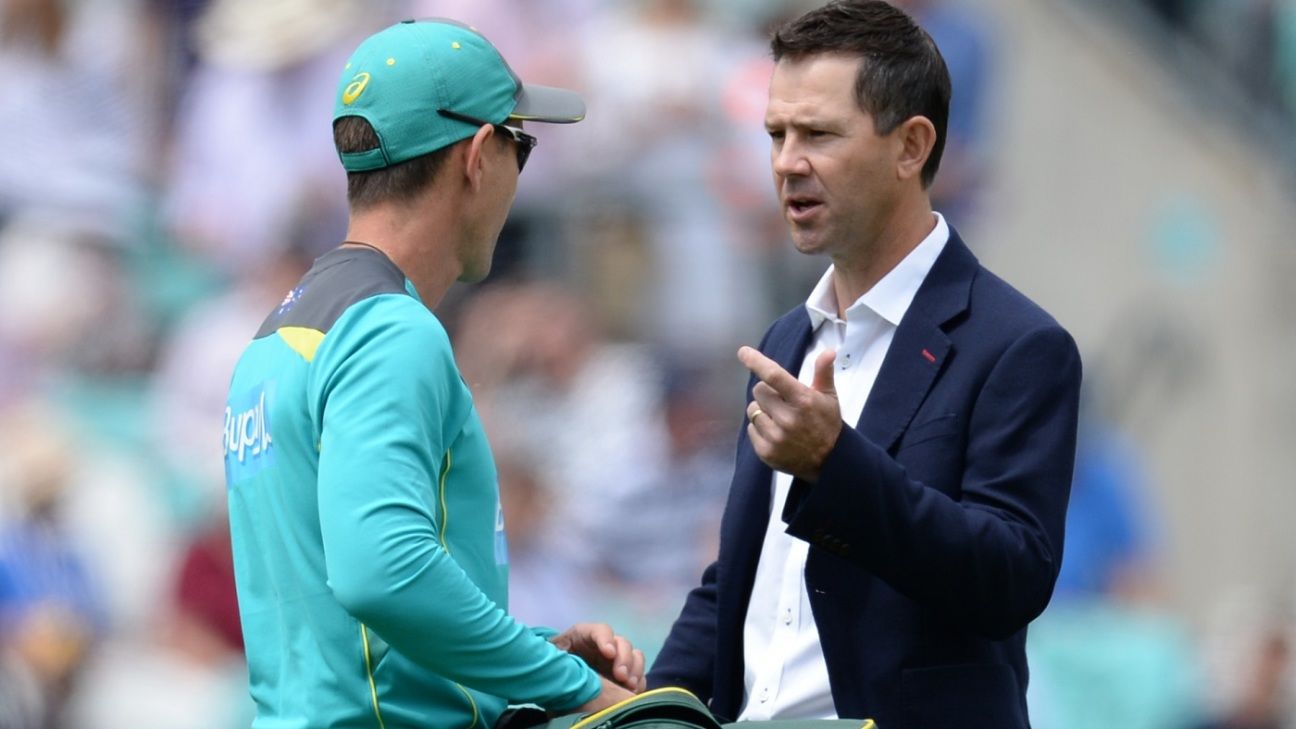Test-cricket broadcasting will hurtle into a new phase after the free-to-air broadcaster Seven secured permission for in-game interviews with Australian players and coaches during the forthcoming series against India, beginning in Adelaide on Thursday.
After extensive off-season discussions with the captain Tim Paine and coach Justin Langer, among others, the network received final signoffs from the ICC, Cricket Australia and the national team on Wednesday afternoon in Adelaide, with the concept to be tried as early as the first session on day one.
While ESPNcricinfo understands that both the broadcaster and the team will be careful to take a gradual approach to the access, possibly by using coaches before players, the concept will break fresh ground for the game’s oldest format, which has always been the most difficult for broadcasters in terms of convincing players, boards and the ICC to allow viewers to hear from players as the game is in progress.
By contrast, Twenty20 and ODI cricket have been far more open formats for experimentation, whether sticking microphones on players fielding, bowling or batting, or gaining pitch-side interview access. Seven’s executive producer of cricket, Chris Jones, said that the idea was to try to have players or coaches speaking with commentators such as Ricky Ponting, either via an earpiece from the team’s viewing area or in a studio located near the dressing rooms. In Adelaide, this space is located in the basement of the Riverbank Stand, only a short and continuous underground walk from the change rooms.
“We would love the opportunity should Nathan Lyon take five-for in the first innings and we know he’s not batting until late and we need to bat for a final session, we’d love the opportunity, if he’s not doing anything, for him to come and sit on the couch and have a chat with Ricky Ponting about what’s happened,” Jones told ESPNcricinfo. “If we’re 2 for 200 and Usman Khawaja’s made a hundred, and he goes and cools down and we’re going ok, then absolutely we’d love for him to come across.
“Justin Langer’s the other one, we’d love to get access to Justin to come across, sit on that couch with one of his very good friends Ricky Ponting to talk about the state of the game. There’s a whole lot of things we need to do, it’s not just up to the cricketers whether we can do that, there’s ICC regulations and all those sorts of things, but we’ve been working really hard to try to get as much of that access as we can, and we’ll be pushing really hard to try to make sure it happens.
“I think this space we’ve got and the ability to call the cricket from that position as well, could give viewers further insight and understanding into what’s happening. We don’t want to be talking at the viewers, tell them what’s happening, they can see what’s happening. Our goal is to tell them why it’s happening. Access to the cricketers and the coaching staff would help a lot with that.”
Thursday’s first day will see parallel coverage of the series on Seven and the pay-television operator Fox Sports, with Australian viewers getting a choice of commentary teams for the first time in the 40-year history of commercial broadcasting of cricket in this country. One contrast likely to be seen is a differing approach to stump microphones: Jones indicated that Seven’s coverage would likely feature faders down when there was on-field confrontation, while Fox is likely to keep their microphones up at all times.
“We are very respectful of the players, the access they’re granting us and what they’re giving us,” Jones said. “If they’re really uncomfortable with something then we’ll listen to them. We also want to bring the viewers as close to the game as you can, but if it does get feisty in the middle from either team, we don’t want to be capturing any obscenities or anything like that.
“We can only work as we go – wouldn’t have a hard and fast rule other than to say we very much respect the players’ views. They have gone a long way out of their way to give us access and take us into places we haven’t been before, to let them spend time with their families, we’ll definitely listen to them and work with the players association on that.
“We put a significant list to them of all the things we think we can do from when they first leave the hotel to when they arrive back later that night. The rooms, the nets, all those sorts of things we can do. Then with that set we’ve got the ability to do some virtual enhancement on set, we’ve got a touch screen that will really help the viewers have a greater understanding.”
